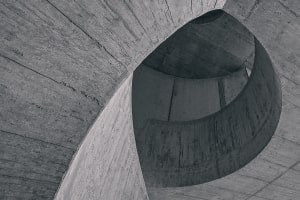Every contractor dreads placing and compacting concrete only to find honeycombed concrete and empty patches. This situation results in costly and time-consuming repairs, demolition or reworks, depending on the defects in the affected concrete structure. Based on this kind of experience, researchers have over time developed a special type of concrete known as ‘self-compacting concrete’, which flows freely through confined spaces and self-compacts without the need for vibration or mechanical compaction. In this course, you will learn more about this specialised type of concrete, together with other kinds of special concrete known as ‘fibre-reinforced concrete’. We begin by studying the history of self-compacting concrete (SCC) and the research that resulted in its invention. Then we explore its uses and advantages as compared to ordinary concrete.
We will then disclose the characteristics of SCC and the methods used for testing SCC to check whether the different types of parameters match the design intent. How can concrete flow freely and compact itself and achieve the required strength in the hardened state? We will demonstrate the science and engineering behind it and elaborate on the proportioning of SCC. Next, we will outline the methods used to determine the ratios in which you should mix the various ingredients to attain the desired properties of SCC. We will investigate the rheology of concrete and cement paste and the methods and apparatus used to test the flow characteristics of these materials. After this, we introduce fibre-reinforced concrete (FRC), the purpose for its invention, the factors that control its performance and the types of fibres used in making it. We will study the process of proportioning ingredients appropriately and mixing them to result in FRC of the desired characteristics.
The final section discusses the properties of FRC in its hardened state and the parameters that affect the characteristics. In civil and structural engineering, circumstances arise that render ordinary concrete unsuitable. Such situations would require the use of these special types of concrete. The knowledge and skills in their design and use would therefore be of utmost importance in such situations. This course is intended for anyone involved in construction, from civil engineers, contractors, structural engineers to technicians and artisans, and prepares you to handle such challenging circumstances successfully. Whether you are a beginner in the building and construction industry or an experienced professional seeking to enrich your knowledge and skill or aspire to join the industry in the future, this course is for you!
What You Will Learn In This Free Course
View All Learning Outcomes View Less All Alison courses are free to enrol, study, and complete. To successfully complete this Certificate course and become an Alison Graduate, you need to achieve 80% or higher in each course assessment.
Once you have completed this Certificate course, you have the option to acquire an official Certificate, which is a great way to share your achievement with the world.
Your Alison certificate is:
- Ideal for sharing with potential employers.
- Great for your CV, professional social media profiles, and job applications.
- An indication of your commitment to continuously learn, upskill, and achieve high results.
- An incentive for you to continue empowering yourself through lifelong learning.
Alison offers 2 types of Certificate for completed Certificate courses:
- Digital Certificate: a downloadable Certificate in PDF format immediately available to you when you complete your purchase.
- Physical Certificate: a physical version of your officially branded and security-marked Certificate
All Certificate are available to purchase through the Alison Shop. For more information on purchasing Alison Certificate, please visit our FAQs. If you decide not to purchase your Alison Certificate, you can still demonstrate your achievement by sharing your Learner Record or Learner Achievement Verification, both of which are accessible from your Account Settings.











 Avg. Hours
Avg. Hours  Contains Video
Contains Video  CPD Accredited
CPD Accredited 
 Total XP:
Total XP: 
 Knowledge & Skills You Will Learn
Knowledge & Skills You Will Learn 







